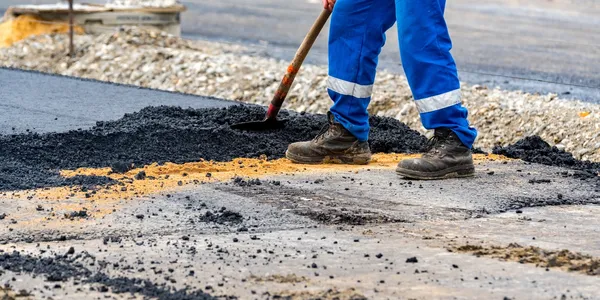Read Time:2 Minute, 40 Second
Paving a driveway with asphalt involves several steps to ensure a durable and smooth surface. Here is a general overview of the process:
- Initial Assessment: Before starting the project, you’ll need to assess your driveway’s condition and determine if it’s suitable for asphalt paving. A professional contractor will inspect the surface for any cracks, potholes, or other issues that might need to be addressed before paving.
- Clearing the Area: The first step is to clear the driveway of any obstructions, debris, or vegetation. This may involve removing rocks, weeds, or old asphalt.
- Grading and Excavation: Next, the area will be graded to ensure proper water drainage. This involves shaping the driveway’s surface to create a slight slope, so water runs off to the sides instead of pooling on the asphalt. Excavation might be necessary to remove any soft or unstable soil that could undermine the pavement.
- Sub-base Preparation: A stable sub-base is crucial for a durable asphalt driveway. The contractor will compact the soil and possibly add a layer of aggregate material, like crushed stone, to create a solid foundation.
- Edge Restraints: Edge restraints, such as concrete curbs or plastic edging, may be installed along the sides of the driveway to prevent the asphalt from spreading beyond the intended area.
- Applying Binder Layer: A layer of binder asphalt is applied. This is a thicker, coarser mixture that helps to stabilize the surface and provides a strong bond between the sub-base and the final layer of asphalt.
- Fine Grading and Rolling: The contractor will fine-grade the binder layer to ensure a smooth surface and use a roller to compact the asphalt. This step helps to remove air pockets and achieve the desired thickness.
- Installation of Surface Course: The final layer of asphalt, known as the surface course, is applied. It is a finer mixture than the binder layer, providing a smooth and visually appealing finish to the driveway.
- Compaction and Rolling: After the surface course is laid down, it is compacted and rolled to achieve the desired density and smoothness.
- Curing: The asphalt needs time to cure and harden properly. It’s essential to avoid driving on the freshly paved driveway for a specified period, usually a few days, to prevent damage.
- Finishing Touches: Once the asphalt has cured, the contractor may apply sealant or a topcoat to protect the surface and enhance its longevity.
It’s crucial to hire a reputable and experienced asphalt paving contractor for the job. They will have the knowledge and equipment to ensure that the driveway is correctly installed, which is essential for its long-term durability and performance. Additionally, they can advise you on proper maintenance to extend the life of your newly paved asphalt driveway.
ChatGPT
